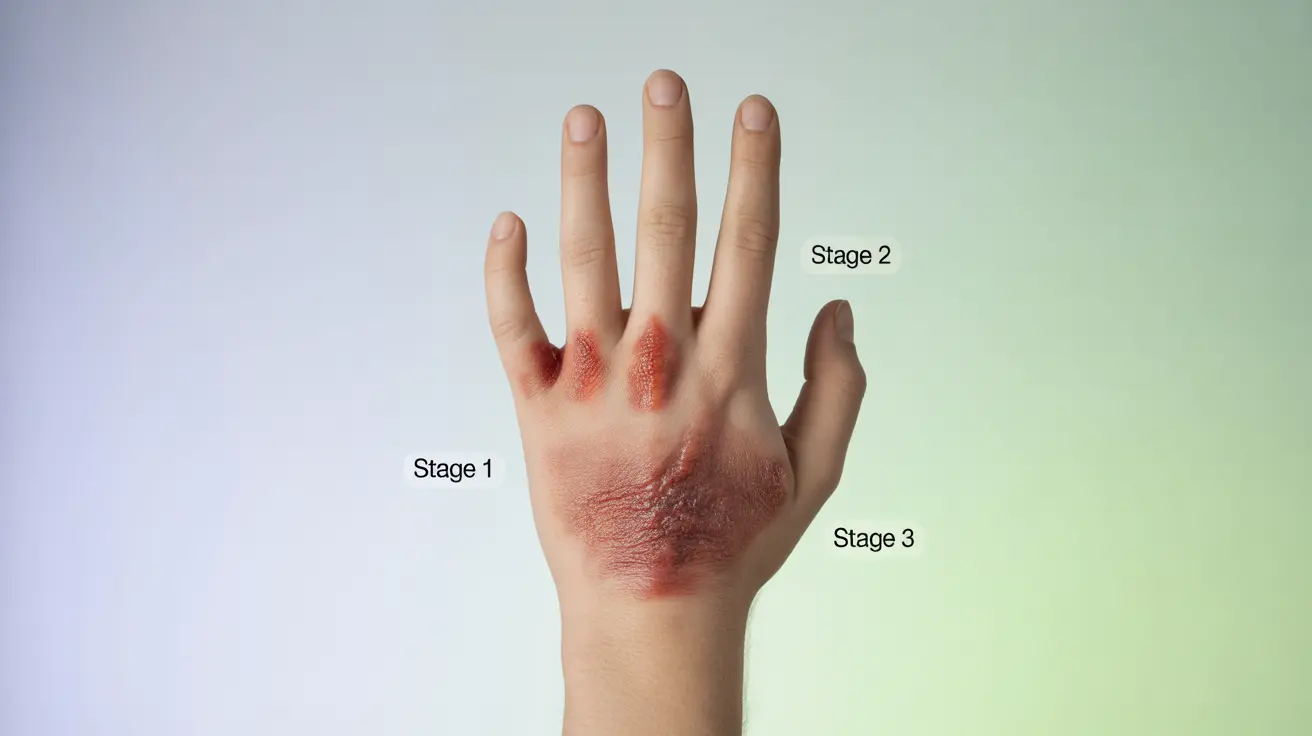Giant hogweed burns represent a serious health concern for outdoor enthusiasts, gardeners, and anyone who might encounter this dangerous plant. When the sap of giant hogweed comes into contact with human skin and is exposed to sunlight, it can cause severe phototoxic reactions, leading to painful burns and potential long-term complications.
Understanding how to identify, treat, and prevent hogweed burns is crucial for personal safety and proper medical care. This comprehensive guide will explore everything you need to know about these dangerous plant-induced injuries.
Understanding Giant Hogweed Burns
Giant hogweed burns occur through a process called phytophotodermatitis, where plant chemicals called furocoumarins become activated by UV light. Unlike typical chemical burns, hogweed burns don't appear immediately upon contact. Instead, the reaction develops over time, particularly after sun exposure, making them especially dangerous and deceptive.
Identifying Giant Hogweed Burns
The progression of hogweed burns follows a distinct pattern:
- Initial redness and skin sensitivity (within 24 hours)
- Formation of painful blisters (24-48 hours)
- Development of dark purple or black scars (after healing)
- Potential hyperpigmentation lasting months or years
Immediate Treatment Steps
If you suspect contact with giant hogweed sap, taking immediate action is crucial:
- Wash the affected area thoroughly with cold water and mild soap
- Cover the exposed skin immediately to prevent sun exposure
- Remove contaminated clothing carefully
- Seek medical attention for severe cases
Medical Treatment Options
Professional medical treatment may include:
- Topical corticosteroids to reduce inflammation
- Specialized burn care for severe cases
- UV protection recommendations
- Pain management strategies
- Treatment for potential secondary infections
Prevention Strategies
To avoid hogweed burns, implement these safety measures:
- Wear protective clothing (long sleeves, pants, gloves)
- Learn to identify giant hogweed plants
- Avoid direct contact with plant sap
- Keep children and pets away from known hogweed areas
- Report giant hogweed sightings to local authorities
Long-term Effects and Complications
Giant hogweed burns can lead to several long-term consequences:
- Permanent scarring
- Increased sensitivity to sunlight
- Chronic skin discoloration
- Potential vision problems if sap contacts eyes
- Psychological impacts from visible scarring
Frequently Asked Questions
What are the symptoms and signs of giant hogweed burns on the skin?
Giant hogweed burns typically begin with skin redness and sensitivity, progressing to painful blisters within 24-48 hours of sun exposure. The affected areas may develop dark purple or black scarring, and the skin can remain sensitive to sunlight for months or years.
How should I treat giant hogweed burns at home and when should I see a doctor?
For initial home treatment, immediately wash the affected area with cold water and soap, and keep it covered from sunlight. Seek immediate medical attention if you experience severe blistering, intense pain, or if the sap has contacted your eyes.
Why does giant hogweed sap cause severe burns only after sun exposure?
Giant hogweed sap contains furocoumarins, compounds that become toxic when activated by UV light. This process, called phytophotodermatitis, explains why burns develop after sun exposure rather than immediately upon contact with the sap.
How can I prevent giant hogweed burns when gardening or spending time outdoors?
Prevent hogweed burns by wearing protective clothing including long sleeves, pants, and gloves. Learn to identify the plant, avoid touching it, and maintain awareness of your surroundings when in areas where giant hogweed might grow.
Can giant hogweed burns cause long-term skin damage or blindness?
Yes, giant hogweed burns can cause permanent scarring, chronic skin sensitivity to sunlight, and lasting discoloration. If the sap enters the eyes, it can cause temporary or permanent blindness, making immediate medical attention crucial in such cases.




